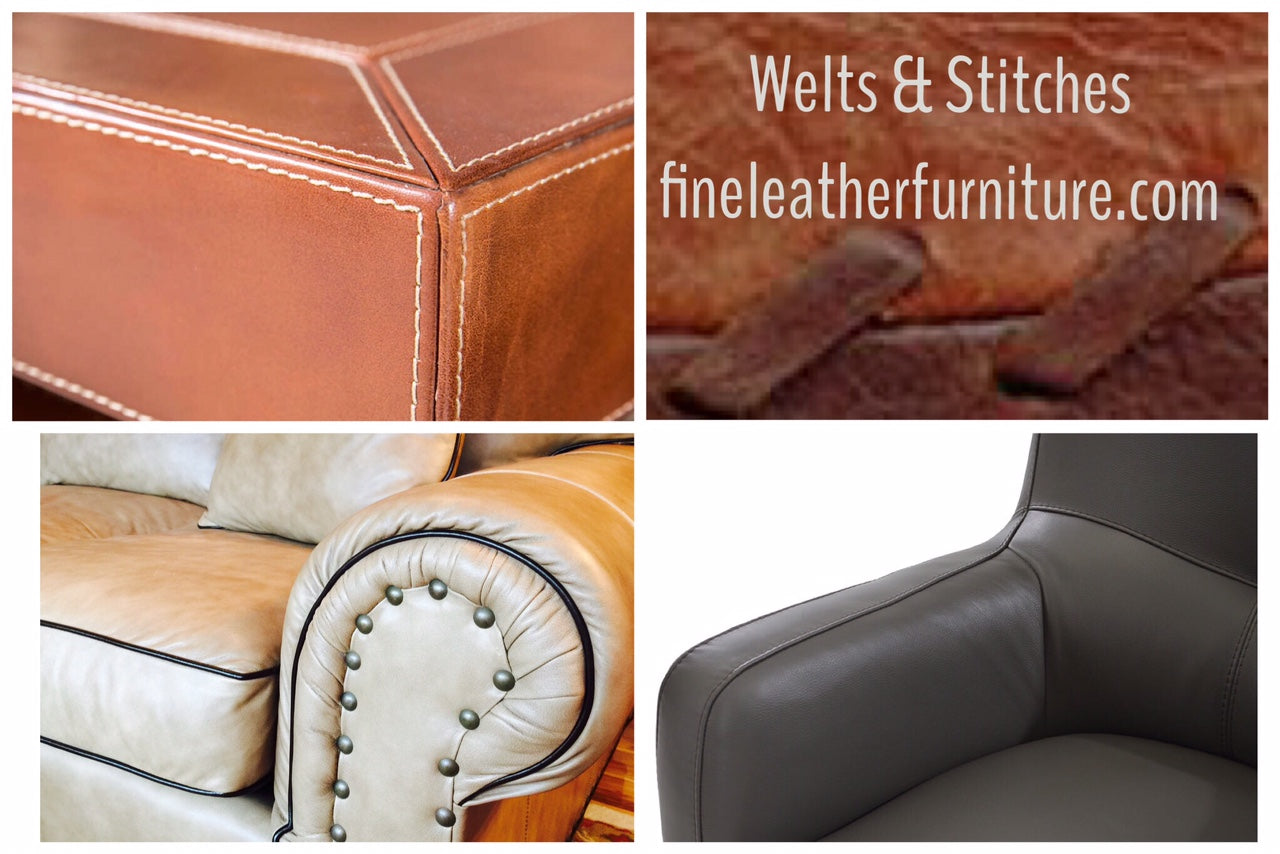★★★★★Rated 4.9/5Based on Our Customer Reviews.
Click to Call us for Assistance - (800) 266-1049

One is not better than the other there is not a right or wrong choice, any application is a good choice it all boils down to personal preference. Special order furniture allows you to be the designer, it’s amazing those little subtle changes in stitching or the choice of a welt can transform a piece of furniture into a one of a kind beautiful piece of your family’s history. One will not outlast the other and one is not better it just boils down to what application looks best on what style. Some styles look better with welts or cording while others look better with a top stitch. Furniture fashion comes in all shapes and sizes. Some more traditional styles are standard with a pipe welt while others feature a baseball stitch that is flush to the surface of the seat and back.
Stitching is a huge part of a leather sofa. As we know leather hides are not manmade and are only so large, each hide averages approximately 50 square feet. Therefore they must be joined together with a stitch to hold the hides together across the entire piece of leather furniture. Whether it is a large leather sectional sofa or just a small cocktail ottoman it will always require more than 1 hide to build. This is why welts and stitches are so important. You will notice all of the leather furniture sold by Wellington’s fine leather furniture has finished seems all the way around each piece. Many homes require a sofa, loveseat or even a sectional to be free floating in their room. It is extremely important that the piece be finished equal all the way around because many times the back of a piece of furniture is the first thing you see as you enter a room.
Typically the stitching or the welt will be the same all the way around the piece. If you contrast the welt color in the front you will want to continue with that around to the back. The same applies to the stitching. If you are using a baseball stitch in the front keep it in the back. Here are a few photo examples of different options for your new furniture that include a contrast welt, double needle top stitch and hand laced stitching.
{"one"=>"Select 2 or 3 items to compare", "other"=>"{{ count }} of 3 items selected"}
Note: Leather swatches are FREE if ordered over the phone. Swatches ordered online will cost $1.00 per swatch.